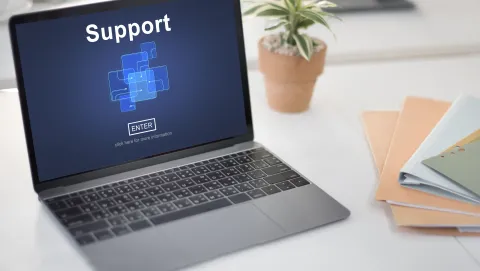5 Common IT Helpdesk Requests and How They’re Solved
In today’s fast-paced digital world, even the best technology occasionally needs a helping hand. From forgotten passwords to faulty printers, IT helpdesks are the first line of defence when things go wrong. Understanding the most common service requests not only helps businesses respond faster but also prevents the same issues from happening again.
In this article, we explore five of the most frequent IT support tickets why they happen, what users can do before calling for help, and how professional technicians quickly get systems back up and running. Whether you manage a small business network or just want to improve office efficiency, these insights highlight how proactive IT support keeps everyday operations running smoothly and securely.
1. Peripheral-related issues
Often users report that a piece of hardware connected to their computer such as a mouse, keyboard, monitor, external drive or wireless device suddenly stops functioning. The cable might be loose, the wireless device may have a low battery, or the correct driver may be missing or outdated.
2. Printer problems
It’s common for someone to try printing and encounter issues the printer might show an error, appear offline, deliver poor quality output, or simply refuse to respond. The root cause could be anything from driver mis-configuration, a network connection fault, empty ink/toner cartridges, or paper tray jams.
3. Device or application login issues
Users frequently get locked out of their computer or an application maybe after entering their password too many times, forgetting login credentials, or being unable to complete multi-factor authentication (MFA). The solution may involve resetting the account, verifying proper credential entry (checking CAPS LOCK, etc.), or clearing browser cache for web apps.
4. Application installation requests
Sometimes the issue isn’t a breakdown at all, but simply a request: a user needs a new software installed or upgraded (desktop, mobile, web, or cloud-native). The process involves verifying the application’s safety, obtaining proper administrative rights, and performing the installation on the designated device(s).
5. Website blocked by policy
A user may attempt to visit a website only to find it blocked with a message like “Access denied” or “This site is blocked.” The filtering is typically in place to protect the network from malicious or non-work-appropriate domains. Occasionally, though, legitimate sites get caught in the net, so one must review and possibly whitelist them while continuing to enforce protective filters for harmful content.
If you are looking for reliable managed IT support, reach out now! We’ll respond promptly to schedule a brief chat to find out more about your business and the IT challenges you’re facing, and see how we can help you solve them.

